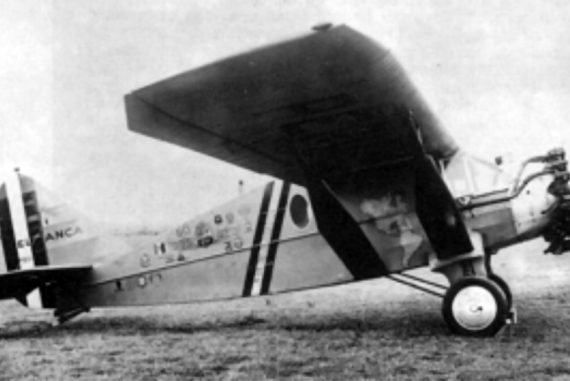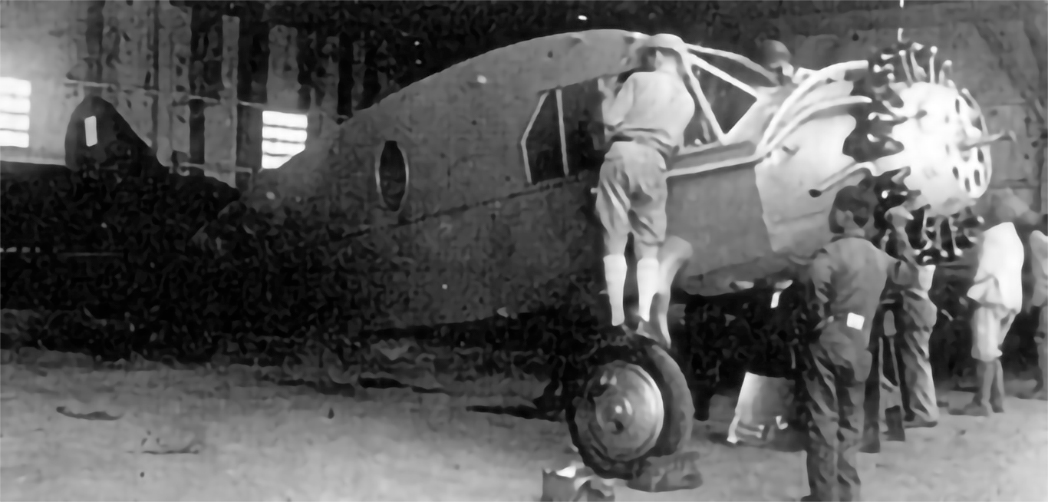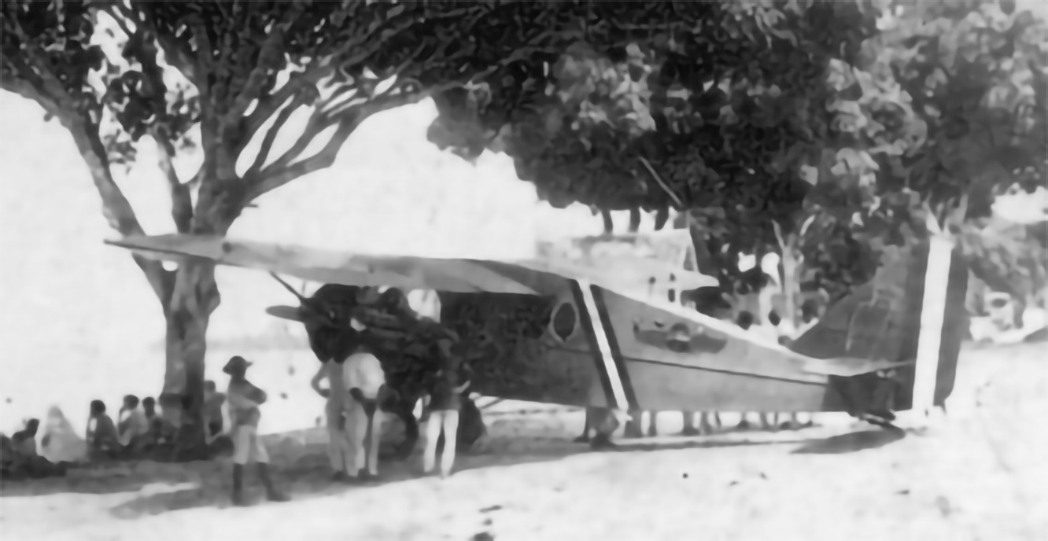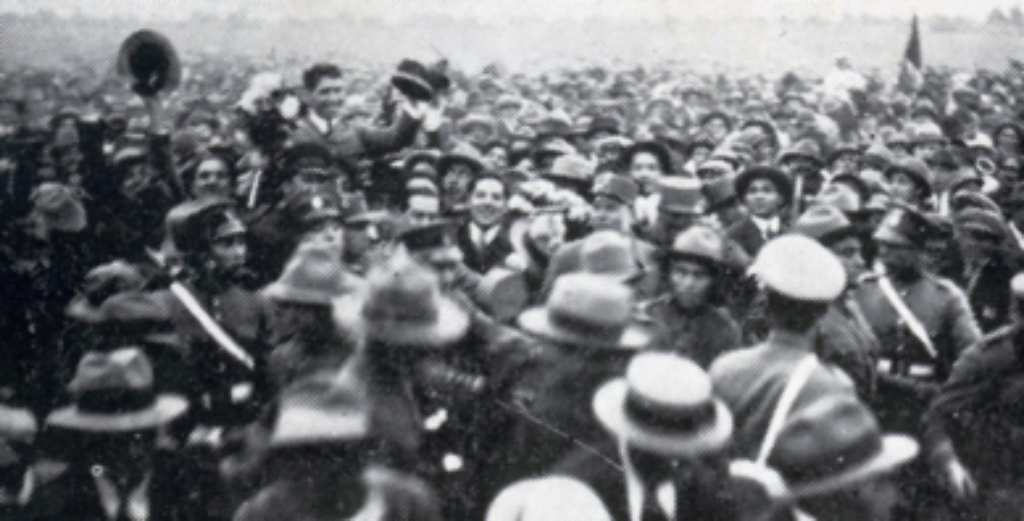A Bellanca named “Perú”

This is the story of a Bellanca CH-200 “Pacemaker”, christened “Perú“, and its brave pilot, Carlos Martínez de Pinillos, who completed one of the most amazing long-range flights across the Latin American Continent.
Carlos Martinez de Pinillos Orbegozo was born in Trujillo, Perú, on the 4th of January, 1895. From an early age he had a great liking for mechanical subjects, studying to be a mechanical – electrical technician in the School of Arts and Offices in Lima.
In 1919 he established the Liberty Garage Company, which quickly became known as the best mechanical facility in the city of Trujillo. On the 21st of September, 1920, Peruvian aviator Herbert Tweddle made the first airplane flight in the north of Peru in a Curtiss Standard and contracted with Pinillos for the servicing of his aircraft.
Soon Tweddle proposed that Pinillos accompany him for the rest of the tour, arousing in Pinillos a passion for aviation. This motivated him to travel to Lima to study in the Bellavista Civil Aviation School, where he soloed on 24 August 1921 and received his 1st class pilot-aviator brevet in October of the same year.
For several years Pinillos made commercial flights with his company Pinillos Aéreo S.A., transporting passengers and performing demonstration flights in cities where they had never seen an airplane. In 1927 he initiated his international flight project, which, after considering several routes, he decided would begin and end in South America. He organized a pro-flight committee to obtain financial support and traveled to New York to search for an appropriate airplane.

The selected aircraft was a Bellanca CH-200 Pacemaker, a high-wing monoplane equipped with a Wright J-5 engine of 220 HP, which allowed it to reach at a cruise speed of 150 Km/h and at a maximum speed of 185. The wings and fuselage were of fabric-covered wood. It had three fuel tanks with a total capacity of 345 gallons of gasoline that allowed a flight duration of 25 hours (approximately 3,800 km) and had a jettison valve in case of emergency; Pinillos requested that Bellanca reinforce the undercarriage for heavy loads and include wheel brakes and full lighting equipment for nocturnal flight. The fuselage was painted dark green and the wings yellow orange. On completion the airplane was christened Perú.
Originally Pinillos had thought to make the flight alone but yielding to the pressures of the aeronautical authorities, he accepted as navigator a naval First Lieutenant named Carlos Zegarra Lanfranco (peculiarly Zegarra couldn’t see with his right eye, whereas Pinillos had lost vision in his left eye due to an industrial accident five years before.)
Having surmounted a great number of difficulties, he was ready to begin the flight in the morning of the 11th of December in 1928. The stages of the first part of this trip were:
| Route | Date | Distance | Flight Time |
|---|---|---|---|
| Lima - Ilo | 11 December | 900 Km. | 7 hrs. |
| Ilo - Santiago de Chile | 12 December | 2,200 Km. | 13.40 hrs. |
| Santiago de Chile - Buenos Aires | 19 December | 1,200 Km. | 9 hrs. |
| Buenos Aires - Montevideo | 26 December | 220 Km. | 2.20 hrs. |
| Montevideo - Río de Janeiro | 30 December | 2,000 Km. | 14.50 hrs. |
| Río de Janeiro - Bahía | 7 January | 1,450 Km. | 10.15 hrs. |
| Bahía - Natal | 8 January | 910 Km. | 6.30 hrs. |
| Natal - São Luis | 15 January | 1,100 Km. | 7 hrs. |
| São Luis - Belém do Pará | 16 January | 560 Km. | 4 hrs. |
Most of the trip was made without incident except for the landing in São Luis when Zegarra, who was located in the back part of the cabin in order to provide counterbalance during ground maneuvers, struck his head against the gasoline tank, causing Pinillos to be distracted and taxi into some soft, damp sand, into which the airplane sank. Hard work was necessary to get the airplane back onto safe ground.

There was no airport in the city of Belem do Pará and for that reason the landing took place in a field improvised on the beach Chapeu Virado on Mosqueiro island. This meant a break in the trip, for two reasons: although they landed safely they could not take off again with enough fuel to reach Venezuela, and they could not obtain official permission to overfly French Guiana unless the Peruvian Government requested it, and the latter could not authorize it as a non-military, civil flight. As a result of this, and after a long delay, Pinillos decided to disassemble Perú and dispatch her by boat to New York. He, along with Zegarra, returned by waterway to Iquitos, then continued by airplane to San Ramón, highway to La Oroya and finally by railroad to Lima.

After dealing successfully with a new series of inconveniences, that included the assimilation of Pinillos as a Captain to the Aviation Reserve Corps in order to make the flight official, both crew embarked for Wilmington, Delaware. They collected Perú at the Bellanca factory where a general overhaul had meanwhile been accomplished. After flight tests, they initiated the second part of the flight. It was carried out as follows:
| Route | Date | Distance | Flight Time |
|---|---|---|---|
| New York - Washington D.C. | 27 May | 254 Km. | 1.52 hrs. |
| Washington D.C. - Montgomery | 30 May | 1,153 km. | 7.30 hrs. |
| Montgomery - New Orleans | 31 May | 453 km. | 3 hrs. |
| New Orleans - México D.F. | 3 June | 1,900 km. | 13.15 hrs. |
| México D.F. - Oaxaca | 7 June | 550 Km. | 5.30 hrs, |
| Oaxaca - San Jerónimo | 8 June | 185 Km. | 1.20 hrs. |
| San Jerónimo - Escuintla | 8 June | 554 Km. | 4.7 hrs. |
| Escuintla - Guatemala | 9 June | 51 Km. | 0.5 hrs. |
| Guatemala - San Salvador | 12 June | 185 Km. | 1.4 hrs. |
| San Salvador - Managua | 14 June | 370 Km. | 2.55 hrs. |
| Managua - San José | 16 June | 299 Km. | 2.45 hrs. |
| San José - Panamá | 18 June | 715 Km. | 5.40 hrs. |
| Panamá - Guayaquil | 22 June | 1,753 km. | 11.20 hrs. |
| Guayaquil - Lima | 25 June | 1,200 km. | 9.20 hrs. |
It is necessary to consider that this was accomplished with only the most basic flight instruments, without a radio and that the maps were very inexact. The reception of the aviators, as much in each one of the cities as at the end of the trip, was huge, with them being carried on the shoulders of throngs of well-wishers and being overwhelmed with decorations, prizes and congratulations at every stop.

In the sides of the Bellanca’s fuselage were painted the flags of all the countries visited during the trip. As a peculiar note we can add that these panels still exist in the Aeronautical Museum because Pinillos decided to cut them out and keep them on the first occasion that the airplane entered the maintenance facility to be re-covered with fabric.
After the triumphal trip, Pinillos considered conducting flights to other continents, and with that aim in mind, he made a long test-flight in “Peru” on the 4th of October, 1929, staying in the air for 24 hours. However, when the conflict with Colombia erupted in September 1932, Pinillos immediately put his airplane at the disposal of the Peruvian air corps. During the conflict, he flew a series of transport missions from the San Ramón Air base, and even assumed command of the base itself after the disappearance of Leonardo Alvariño, the previous commander.
After the war Pinillos, disappointed and tired of military aviation being marginalized, and forever being treated as an assimilated civil aviator, requested his demobilization. Later on, he was hired by the Compañía de Aviación Faucett S.A., where he flew the famous Stinsons (airplanes made in Peru) for many years, being the first Peruvian aviator to reach 10,000 flight hours on the 8th of April, 1940. Carlos Martínez de Pinillos passed away in Lima, victim of a postoperative complication, on the 23rd of June, 1947, having almost reached 20,000 flight hours.
After its participation in the conflict with Colombia in 1932, during which she flew numerous transport missions, the Bellanca Peru was stored at Las Palmas, until the authorities of the School decided that she occupied necessary space and requested that Pinillos dispose of it. He, not being able to take it himself at that moment, was forced to sell it (a moment of great unhappiness in his life). It was bought by the civil aviator Juan Pardo de Miguel, who used it for commercial flights all over the country. Later he sold it to Herman Fiurman but, unfortunately, he crashed her soon after, dying in the crash and destroying the airplane completely.
Quoting the words of Pinillos: When I saw that the “Peru” had turned violently to pieces, to twisted metal of indignation, in ashes of boredom and of weighing, the Earth opened under my feet…